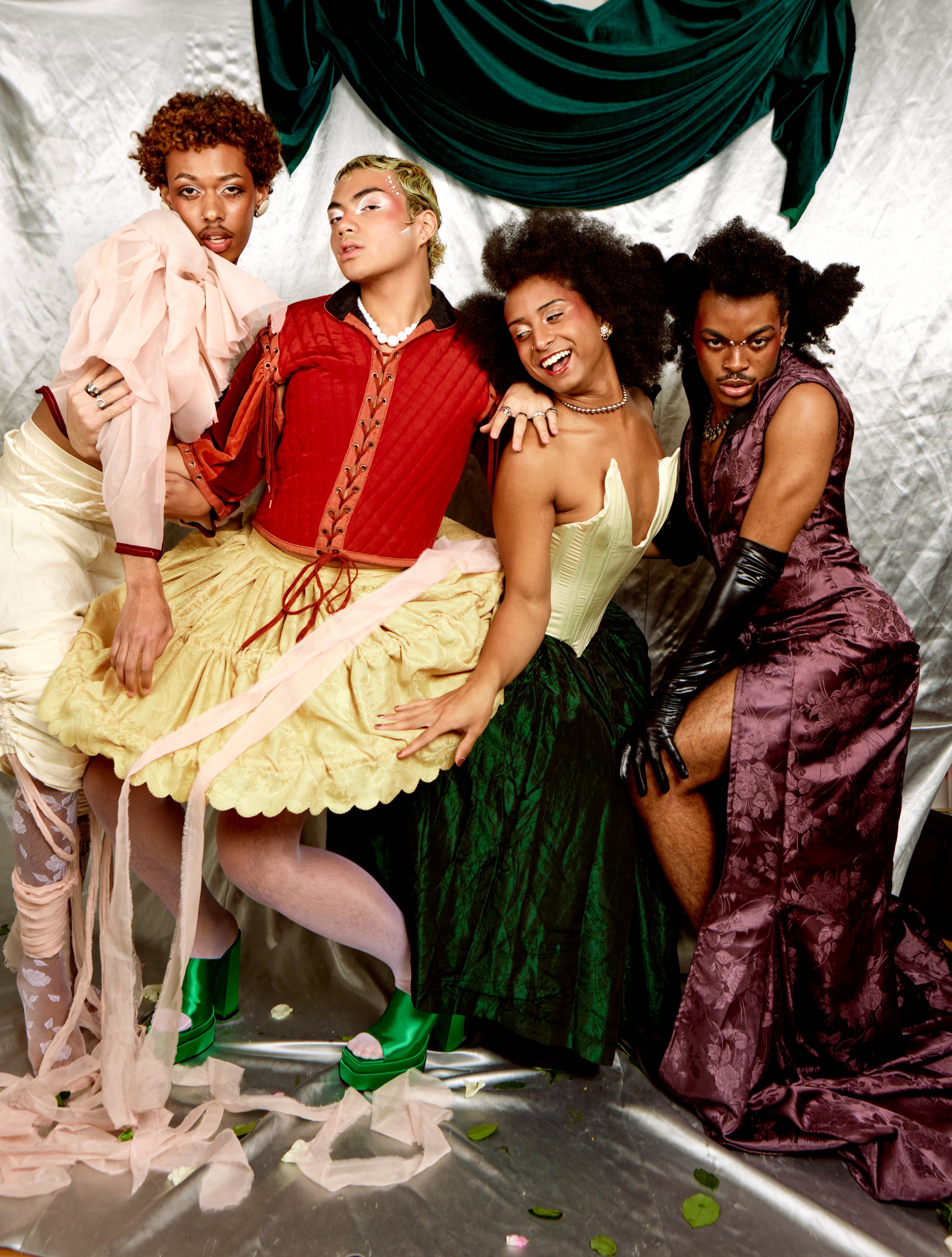Facade of Femininity, Mystique of Masculinity
The year is 1968. Egalitarian space-age chic is the hot new thing and designers like Pierre Cardin, Paco Rabanne, and Andre Courreges have ditched gendered silhouettes for a new gender-agnostic style: unisex. The New York Times has just coined the term “unisex” and appended it to all gender-neutral fashion styles. Department stores around the U.S. have even begun to get behind the movement toward genderless clothing, siphoning off sections for unisex clothing. However, just as quickly as they opened, they shut down and by 1969 the unisex revelation of ‘68 was a thing of the past.
Although unisex had its brief moment in the mainstream in the late 60s, the gendered dynamics of clothing were left largely unchallenged with most fashion houses adhering to separate menswear and womenswear showcases. This bifurcation is still the norm, but in the past few years, big steps have been taken towards eradicating the gender binary in fashion, such as London Fashion Week announcing that it will now not only be seasonless, but genderless as well. Remarkably, the industry is catching up and implementing much-needed changes to account for the gender spectrum, but gender-fluid fashion has existed long before top fashion houses deemed it acceptable. Gender non-conforming people have used clothing as a vehicle to express their gender identity throughout history, it’s just that this is a history that has tended to be erased from the public milieu.
Dress by Caleb Ryan Wells Website/Instagram, Crinoline by Nicole Adalina
The way in which sex and gender have operated in the realm of fashion is crucial to building a more gender-inclusive future. The gendered nature of clothing that has been ingrained into us is itself, a fallacy. If you look back at the history of clothing, the gendered rules that exist today were flipped on their head, revealing the utter artificiality of gendered clothing in the first place.
Dress historian, Jo B. Paoletti, cites the 18th century as a time when there were no notable differences in men’s and women’s dress and, in fact, men were often the ones that showed off their wealth and elegance through decadent clothing. Fashion took on a feminine connotation in the 19th century and men ceased to wear jewelry, certain fabrics, and perfumes to showcase their abundance of wealth. I’m sure we have all seen our fair share of gender reveal parties and are familiar with the color signaling that accompanies them: pop this balloon to assign a gender to your child before they’ve even entered the world! Blue for boys, pink for girls of course. Well, to point out the sheer absurdity of this practice, color codes for babies weren’t even a thing until the 1940s when American manufacturers and retailers started marketing them separately. In fact, prior to this blue was seen as delicate so it was associated more with girls and pink was seen as a stronger color, so it was associated with boys (obviously). Evidently, history is on our side to back up the fact that gendered clothing is all arbitrary.
I would go so far as to argue that any clothing can be “gender-fluid” because the defining characteristic of gender-fluid clothing is the wearer, not the garment.Nick Paget, a senior analyst at World Global Style Network (WGSN), a global trend forecasting company that analyzes consumer shopping behavior, summarizes it well, “The notion that clothing as an expression of our personality belongs to one gender or another is the social construct that needs disassembling.” Fashion designers promoting androgynous or gender-fluid clothing are great, but in reality, gender- fluid dressing is self-constructed.
When brands and designers claim gender neutrality in their work, what is actually most important is not the garment itself, but the fit. Of course, a male-bodied person can cross over to shop in the women’s section of their local department store if they deem fit and vice versa, but chances are the fit of the clothing will never be quite right. Experimenting with different fits for traditionally gendered garments is a more meaningful approach to gender-fluid fashion design than merely calling an androgynous-looking garment gender-fluid. There are plenty of brands out there attempting gender “neutrality”– with androgynous models that tend to lean towards more masculine facial features. The brands put these models in gender neutral clothing that is, more often than not, plain or leans towards traditionally masculine styles. There are not as many brands experimenting with different designs to make, for instance, dresses that are suited for a male body. Randomly categorizing things as gender-neutral actually inhibits us from truly breaking from the confines of the gender binary because these garments often don’t radically challenge our norms of what sorts of garments we are used to seeing on what sorts of bodies. I also pose the question: what is gender neutrality? And what garments fall under that term? If so-called gender neutrality only goes so far as to make gender neutral t-shirts and pants, aren’t we just reinforcing the idea that only certain garments can be worn by multiple genders? And that others are better left to their traditionally gendered wearers.
There is no question that fit and design come into play when defining gender fluid fashion. When designers are trained in drafting, cutting and pattern-making it is based on the differences in body shape between the sexes and, of course, different bodies have different needs. But, these needs are not simply determined by sex. Even within people of the same sex, differently abled-bodies or differently sized-bodies have different design needs that are often overlooked in the realm of high fashion. So rather than using gender as the marker to distinguish between different fits, perhaps more descriptive terms such as “bust-darted shirts” would be a more inclusive way to differentiate clothing based on fit.
The rise of gender-fluid fashion in the mainstream is reflective of a much-needed shift in our understanding of gender, but as more brands come forward with more gender inclusive pieces, it is important to make sure we aren’t reifying the gendered dynamics of fashion’s past. I dream of a fashion world where we aren’t bogged down by superfluous gender categorizations. Where a skirt is just a skirt.
Models: Bobby Stevenson, Jayda Rodriguez, Keanu Williams, Nicolas Lazo
Photographer, Photo Director, Creative Director: Kervens Jean
Stylist, Fashion Director: Monica Robles
Stylist, Editor-in-Chief, Creative Director: Pilar Bradley
Assistant Stylist: Kweku Andoh
Assistant Stylist, Editorial Assistant: Nadia Adams
Makeup Artist: Jade Burdman
Hair Stylist: Keanu Williams
Videographer, Production and Set Director: Luna Abreia
Managing Editor: Nova Krasner
Social Media and Public Relations Director: Maddie Paradise
Graphic Designer: Angelina Galanopoulos
Writer: Madison Hough
Fashion Editor: Audrey Tobin







